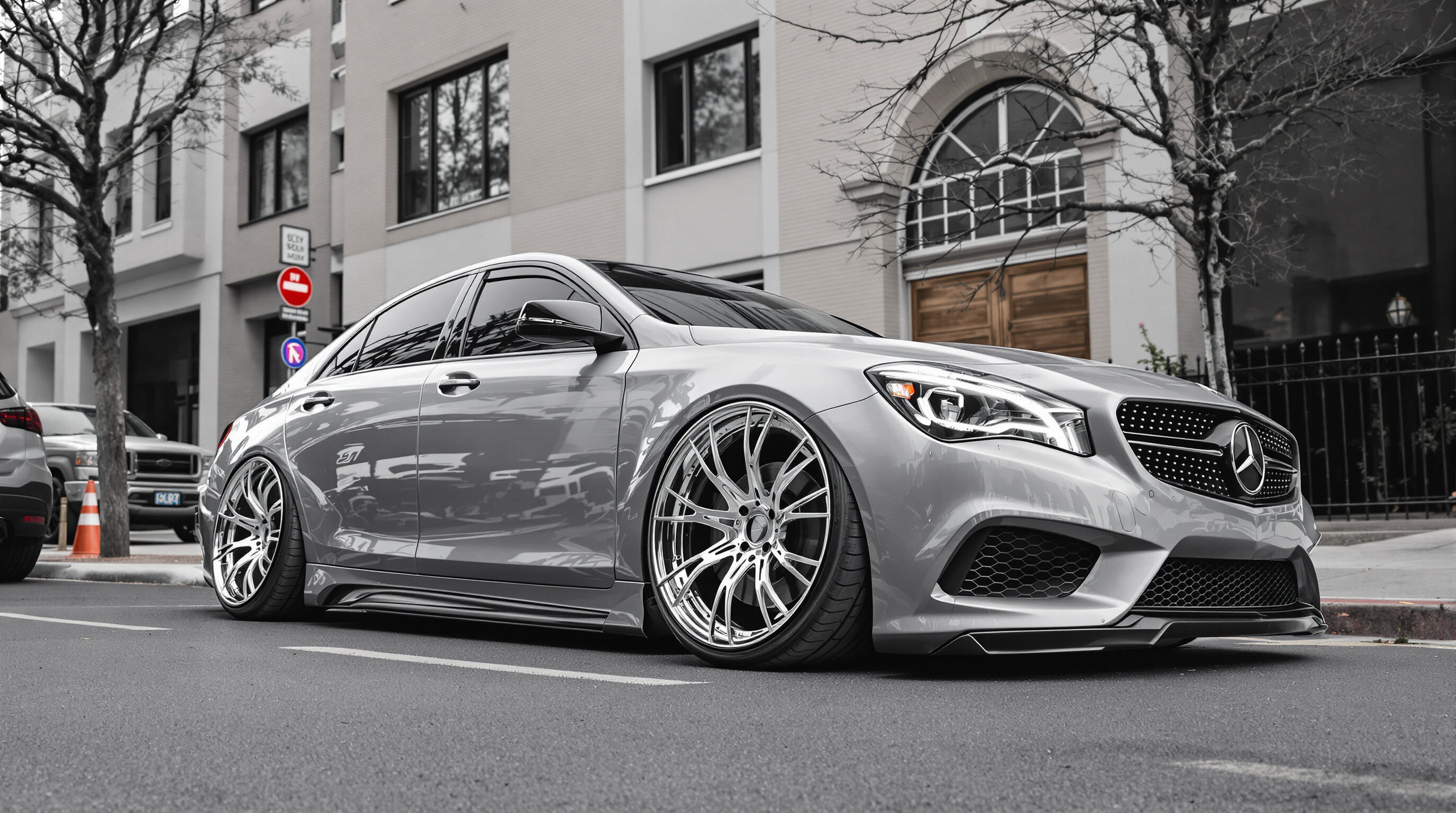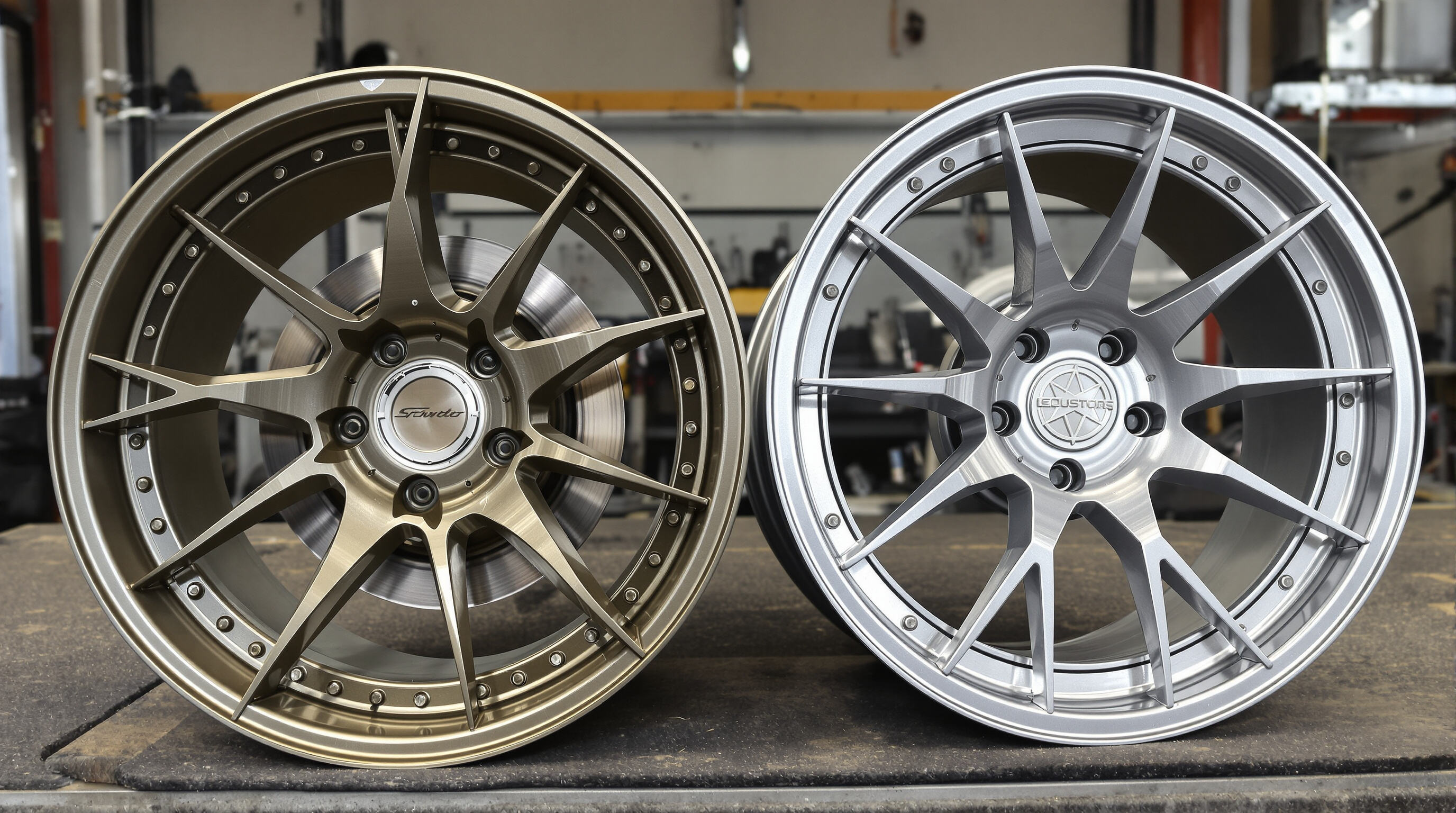When it comes to making a car stand out visually, custom wheels are pretty much everything. They take regular vehicles and turn them into something people actually notice on the road. Factory installed rims tend to be all about selling well to the masses rather than standing out from the crowd. That's why so many car fans go for custom designs instead they want something that shows off their own style. According to a recent study in automotive design trends, around 7 out of 10 car enthusiasts put wheels at the top of their list when talking about looks. What makes these aftermarket wheels so special? Well, they highlight details like distinctive spoke shapes or color combinations that most original equipment manufacturers just don't offer. These little touches make all the difference for someone who wants their ride to look different than everyone else's.
The choice of finish really affects how a car looks overall. Chrome gives that classic shiny look most people associate with luxury cars, whereas matte black makes a vehicle look more aggressive and contemporary. Glossy paints make colors pop more vividly, which works great when someone wants those striking red or blue highlights on their ride. When using painted finishes, getting the exact same shade as the rest of the car becomes possible, so everything matches up nicely visually. Many top car makers have started applying these special UV resistant clear coats lately because they know this helps keep the paint looking fresh and vibrant no matter what kind of weather conditions the car gets exposed to over time.
When parts don't match up visually, it just looks wrong. Take sleek black wheels on modern cars they really stand out against sharp lines. But those rough bronze colored rims? They look right at home on older trucks with their classic vibe. Red sports cars pop even more with shiny black five spoke wheels, while green SUVs seem to come alive when paired with gold split rim designs that have a bit of texture. Most pros recommend trying out at least three different finishes next to the car's actual color in daylight before making a decision. Seeing how they react to sunlight makes all the difference in picking something that works for both style and function.
Modern customization balances three elements:
Combining these factors allows owners to engineer bespoke aesthetics that amplify their vehicles inherent design language.

Recent market analysis shows a 37% increase in demand for 19-21 inch custom wheels among modern vehicle owners compared to traditional 17-18 inch options. This shift reflects evolving consumer preferences for wheels that fill wheel wells more completely while maintaining compatibility with stock suspension systems.
Upsizing wheel diameters by 2-3 inches over factory specifications enhances a vehicles visual presence by reducing tire sidewall height by 15-20%, creating a 20% more aggressive wheel-to-body proportion according to industry benchmarking data. The increased metal surface area allows for more intricate spoke patterns that catch light differently at various angles.
The ideal 1:2 ratio between tire sidewall height (30-series) and wheel diameter (21-inch) prevents the wagon wheel effect while maintaining ride quality. This proportional relationship reduces unsprung weight by 12% compared to improperly matched setups, according to automotive engineering principles.
High-performance alloys like forged aluminum reduce wheel weight by 18-22% compared to stock steel wheels. This weight reduction decreases rotational mass, allowing vehicles to accelerate faster and respond more precisely to steering inputs. Aftermarket wheels with optimized spoke designs also improve lateral stability during aggressive cornering.
Open-spoke configurations in premium custom wheels increase airflow to brake components by 35-40% compared to factory wheels. This thermal management prevents brake fade during sustained use, maintaining consistent stopping power. Many track-focused designs incorporate directional vanes that actively channel heat away from critical components.
Wider wheel profiles (9-11 inches vs. standard 7-8 inches) accommodate tires with 20-30% larger contact patches. This expanded footprint improves dry pavement grip by 15% and reduces hydroplaning risks in wet conditions through optimized tread engagement. Properly sized setups maintain sidewall flexibility for impact absorption while maximizing road feedback.

Today's custom wheel makers are really pushing the boundaries with their metal work to get better performance out of wheels. When we talk about forged wheels, these are made by applying massive pressure to top quality aluminum or magnesium alloys. What this gives us is something pretty special: they're typically around 30 percent lighter than regular cast wheels while still being super strong. This fits right into what's happening in the market for lighter wheels overall, since lighter rotating parts mean cars run better and use less fuel. Sure, forged wheels will set folks back about 40 to maybe even 60 percent more than standard cast options, but most serious enthusiasts see that extra cost as worth it when looking at how much longer these wheels tend to last. Cast wheels still have their place though, especially for people watching their budgets. These are basically made by pouring hot metal into molds which lets manufacturers create all sorts of fancy designs without spending as much money on production.
Surface engineering innovations now extend beyond aesthetics to functional protection. Leading manufacturers employ multi-stage processes like:
Recent market analysis highlights growing adoption of these technologies, with 78% of aftermarket buyers prioritizing durability alongside visual customization.
Custom wheels enhance the visual appeal of a vehicle, allowing for personal expression in style. They can dramatically alter a vehicle's appearance, making it unique and reflective of the owner's personality.
Larger custom wheels offer a more aggressive stance and enhanced visual aesthetics. They can also improve vehicle performance by allowing for larger brake components and optimizing the wheel-to-body proportion.
Advanced coatings and finishes enhance the durability and longevity of wheels. Techniques like plasma electrolytic oxidation and graphene-infused layers provide superior protection against corrosion and scratches.
Lightweight alloys reduce the wheel's rotational mass, which improves acceleration, handling, and braking efficiency. They also provide better heat dissipation, which is crucial for maintaining braking performance.
To achieve a cohesive look, try out different wheel finishes next to your car's color in daylight. This helps in selecting the best match that complements both style and functionality.